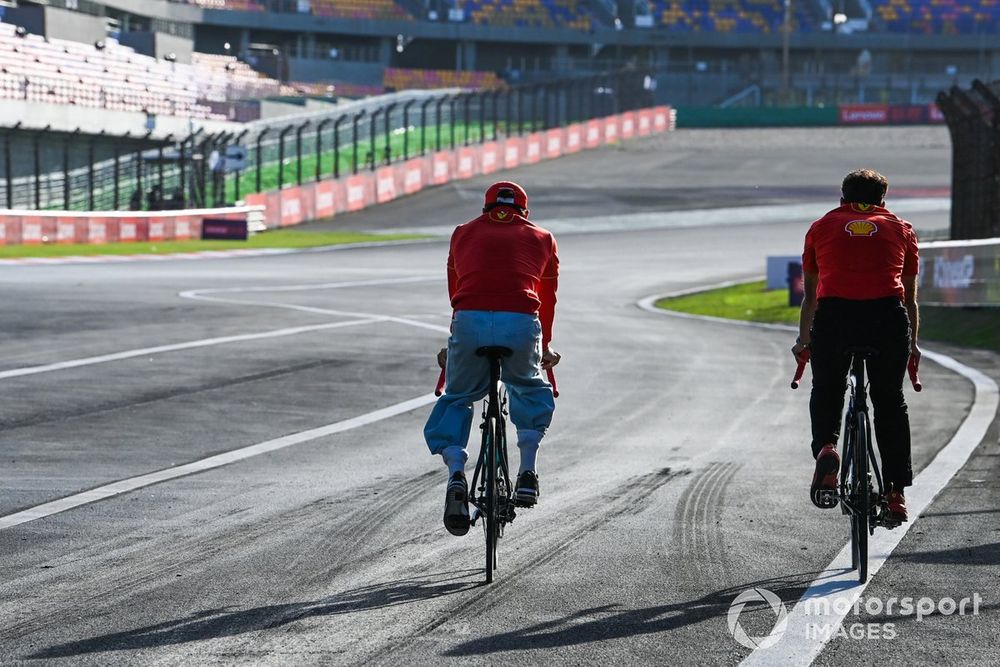With F1 teams having done a lot of pre-event work in the simulator based on information from both Pirelli and the FIA, they were caught out when they arrived at the circuit on Wednesday by the visibly different track surface.
While drivers said it looked like the track had been “painted”, it emerged that it was actually a liquid bitumen surface treatment that had been applied last year to help reduce the degradation of the old asphalt.
With the circuit having been used since, elements of this treatment had been worn away on the racing line – which has given the surface a two-tone appearance.
But beyond it looking different, the treatment has impacted grip levels – especially with there being a contrast between areas where the bitumen remains in place and where it has been worn away.
While the FIA normally informs teams ahead of race weekends of any material changes to the circuit, no notification about this treatment was included in documents that were sent to teams and Pirelli.
Furthermore, Pirelli normally sends engineers in advance of an F1 meeting to deliver up-to-date data on the track conditions, but this was not done this time because the Italian company had none of its F1 personnel free to do it.
It was only when it arrived at the circuit on Wednesday with its engineers that the issue emerged – triggering some surprise.
Photo by: Mark Sutton / Motorsport Images
Asked about how much communication there had been with the FIA about the treatment, F1 chief engineer Simone Berra said: “We didn’t get any indication, so we were surprised as well.
“We noticed it on Wednesday when we were doing the usual track inspection, and it was quite clear that this surface was completely different from the old one.”
Autosport understands that the lack of warning over the surface was discussed in Friday morning’s team managers’ meeting with F1 race director Niels Wittich.
Sources suggest that while Wittich admitted to being aware of the work having been done, he did not consider it necessary to inform the teams because it was not a change that should have materially impacted the track’s performance level, nor require any change of homologation.
While the grip changes were certainly not extreme enough to have a scenario as bad at Turkey 2020, Berra added that in the future it was clear the circuits should make it more obvious, especially with the FIA, of the impact of any works done at F1 venues.
Asked what…
Click Here to Read the Full Original Article at Autosport.com – Formula 1 – Stories…

